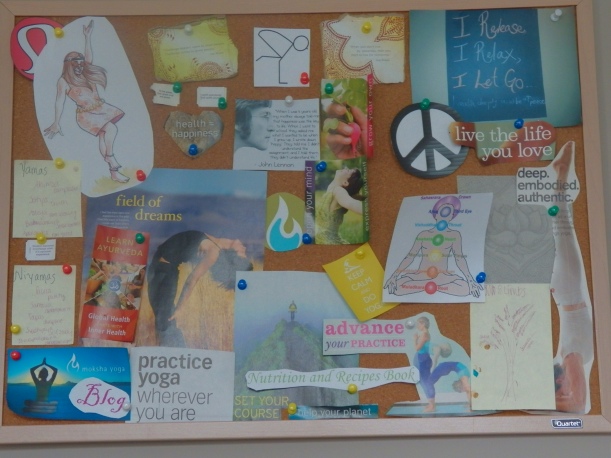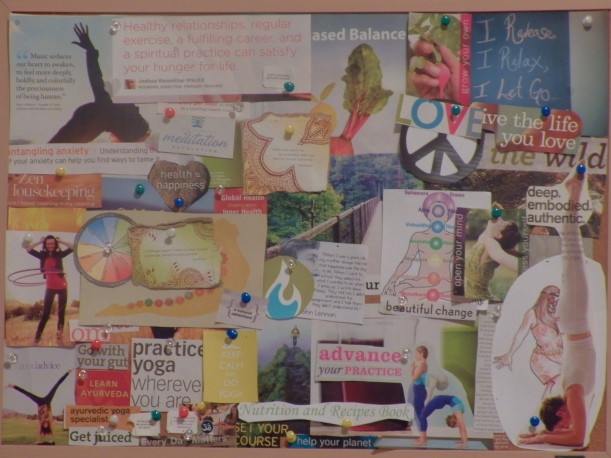 Goals and dreaming big can become overwhelming and can make you feel as if you are stuck and they are impossible to achieve or reach. This can lead to more anxiety, stress and burn out, usually the exact opposite of why you created the goals in the first place, because they seem like so much work, or it feels as if they will never happen.
Goals and dreaming big can become overwhelming and can make you feel as if you are stuck and they are impossible to achieve or reach. This can lead to more anxiety, stress and burn out, usually the exact opposite of why you created the goals in the first place, because they seem like so much work, or it feels as if they will never happen.
When you are stressed or looking to create a change, it often feels like it needs to happen quickly, and with a HUGE shift in our daily life, in order to make it happen and stick. You probably really want that goal to part of you life, sooner rather than later, so you push, feel frustrated when it take more time, and eventually feel as though it is not worth the effort.
The good news is, goals are more achievable when you take smaller steps (or smaller goals) in order to reach the bigger ones with time. This means – they don’t have to happen all at once and they can happen (and should happen) with smaller increments .
Take creating healthier eating habits aka dieting, for example. With dieting, people tend to want to make huge, drastic changes and overhaul their diet, and in return receive results immediately. However, it is often the people who make small changes that build over time who reach their goals and keep results for the long-term, more than the people who make big, sweeping changes at once (like New Years resolutions). This is because the huge, drastic changes are often harder to do in the short-term and even more difficult to keep up in the long-term. It’s where yo-yo dieting comes from. Smaller goals, that may not yield as big of results immediately but instead build up overtime, are easier to start and to maintain, because you are incorporating them into your current life and learning new habits along the way. It cuts through the overwhelm and give you something more sustainable. This is true for any goals that you are trying to reach or changes you are wishing to make.
Here is another example: Let’s say you are looking to reduce stress and overwhelm with some mindfulness practices. You have a friend who reduced their stress through daily meditation and you’d like to give it a try too. They are on Day 25, and are able to sit in a 20 minute meditation each day, without any issues with sitting, their mind wandering too much, or difficulty finding time to make it happen. You think this sounds like something you would enjoy, but the idea of sitting with your mind “blank” for 20 minutes seems overwhelming – you don’t have the time or stamina – so you decide it is too hard to do and not something that would fit your schedule. You share this with your friend, feeling upset that this goal won’t work for you. Your friend let’s you know they didn’t start this way either. They started small and built up, until it became a regular part of their day, even though at first it seemed like it would be impossible.
If you wish to start a regular meditation practice, you have to start small and build, so that is becomes a regular habit that grows and helps you meet your overall goal. Start meditating for 5 minutes a day (or most days) and then build up to 10 minutes, then 20 minutes, as you start to make room for it and experience benefits from it. When doing it this way, you build up slowly, so the changes are easier to make and last longer than if you had started all at once.
With goals setting, it is not always about completing your goal quickly or overnight, but instead having an action plan to help you reach that goal as you grow. This will not only help you to reach your goal more effectively, but help you to keep going and evolve more once you reach your goal.
Let’s look at the common types of goal setting together:
- SMART Goals:
- These are the traditional type of goal setting, and are similar to the types of goals used for Speech Therapy clients.
- SMART stands for: Specific, Measurable, Attainable, Relevant and Timely.
- These goals are made to be well-defined, measurable goals that are realistic and are able to complete in a certain amount of time.
- They focus on the smaller details.
- The good: They give you a guide to follow and a time-frame to get there.
- The bad: They can be limiting, without a lot of flexibility, and often don’t give you anywhere to grow once you reach your goal
- Example: “I want to get certified in _ therapy technique within the next 2 years”.
- Goals with “Soul” or Purpose:
- These are more non-traditional, holistic ways to set your goals
- A shift in how you look at your goals and the reasons behind setting them.
- They focus on the bigger picture of your life, instead of the smaller details
- They often work with how you want to feel, rather than focusing on what you should do or what you want
- The good: They offer a lot of growth for creating your daily life and after you reach your goal.They are ever evolving.
- The bad: They can be difficult to follow, without set steps or actions to take. They don;y always have a timeline or trajectory for how to incorporate them
- Example: “I want to feel more freedom and passion within my work day”.
Both of these are great ways to set your goals, but they both also have faults that will make it difficult to pursue your goals, or to feel fully satisfied once you achieve them. In order to make better goals, you need to combine the two types to create a bigger picture and have an action plan. When you put the two together, you get to look at the bigger goals of how you want your work and life to feel – how you want to experience it – by setting smaller goals that can take you there and continue to evolve once you reach them.
Let’s set some goals: Start with the bigger picture and work you way down to create a step-by-step process of reaching your goals, and growing with them.
- Start with the bigger picture – What is your overall goal?
- What do you want to feel?
- Find your core values/feelings/words that will help bring that to you
- Examples: abundance, freedom, grounded/security, thriving, flourishing
- Set a time-frame:
- When do you see this happening (reasonably)? 5 years, 1 year, etc.
- Plan it out: Decide how to make it happen in small steps
- If your goal is 5 years – What do you wish to achieve by then?
- What can you do this year, and each continuing year, to bring you closer to it
- At 1 year – What piece of your 5 year goal do you want to reach by this time?
- How can you start to move forward from your 6 months?
- At 6 months – How will this help you reach your 1 year goal?
- What more can you do to start to get to your year mark?
- At 90 days – How does this continue the month goals you have set?
- How can you expand upon what you have done, to create more?
- At 30 days: Where does this take the weekly goals you have made?
- What can you do this month, and each month, to reach this goal?
- At 1 week: How does this build upon each day?
- What can you do each week to reach your monthly goal?
- Today: How can you begin?
- Where can you start today to get you there?
Example: You want to have more freedom in your life, through less financial struggle. You decide pay off your student loans in 5 years, through a side hustle. In the first year, you need to make _ amount to help you pay for that, growing it by X each year through various streams of revenue. In the first 6 months, you need to be making X amount through a few of the revenue streams, so you market them to new sources. In the first 90 days, you have 2 steady streams of income, that will grow over time. In the first 30 days, you start selling your first product. In the first week, you start creating your first product. In the first day (today!), you decide what type of products you are going to create.
*This is just an example and not a fool-proof plan. Your real plan will have more details and factors, most likely.
Now go to your calendar or planner: If it’s not written down, it is more likely to NOT happen. You need to write it down and put it into your calendar/planner BEFORE you begin. This way, you can see what to do each day or week to help you reach your goals. It also helps you to reduce some of the stress and anxiety that can come with setting goals, because you are taking it out of your head and putting it somewhere else. This allows you to examine it a little better, and also takes some of the responsibility of remembering it off of you.
Remember, goals that are worth doing, and that are most achievable, are ones that look at the smaller details to help you get to the bigger picture of your life.
What are your goals for your SLP life and what steps are you taking to create them?
You can download this entire post, as well as a free workbook for Goal Setting in the SLP Toolbox. If you are a member, look for the “Goal Setting Guide” in the SLP Toolbox. Not a member? You can sign up (it’s always free!) below.
Much Love,


![]()


 Goals and dreaming big can become overwhelming and can make you feel as if you are stuck and they are impossible to achieve or reach. This can lead to more anxiety, stress and burn out, usually the exact opposite of why you created the goals in the first place, because they seem like so much work, or it feels as if they will never happen.
Goals and dreaming big can become overwhelming and can make you feel as if you are stuck and they are impossible to achieve or reach. This can lead to more anxiety, stress and burn out, usually the exact opposite of why you created the goals in the first place, because they seem like so much work, or it feels as if they will never happen.






